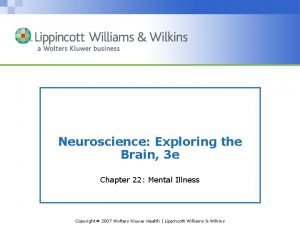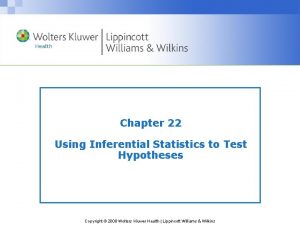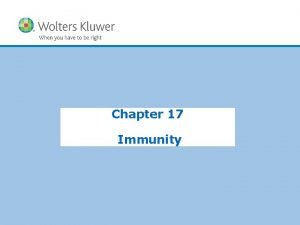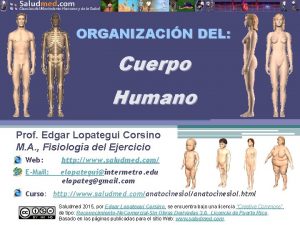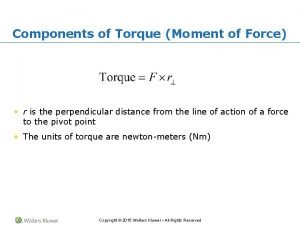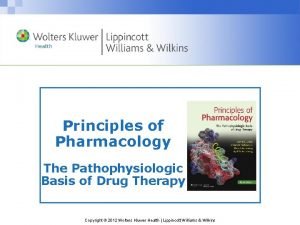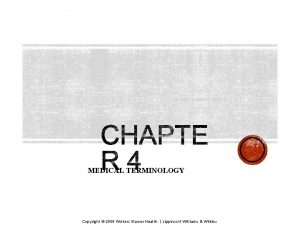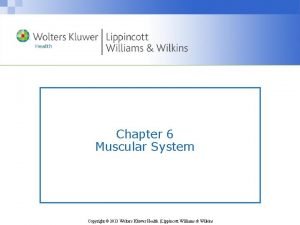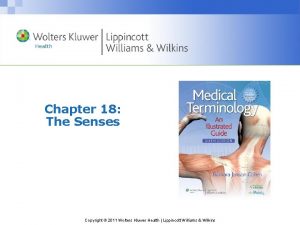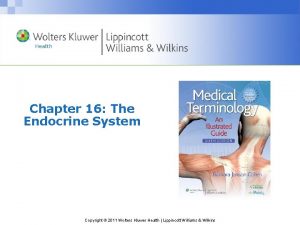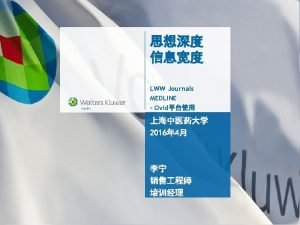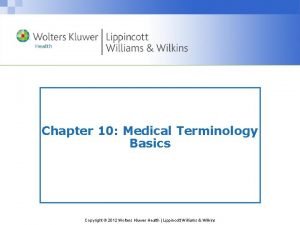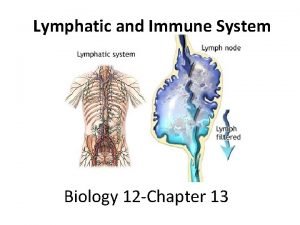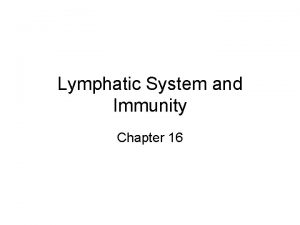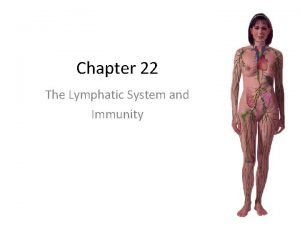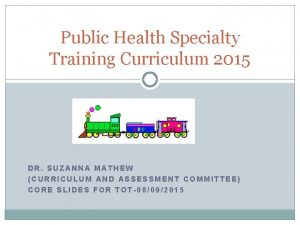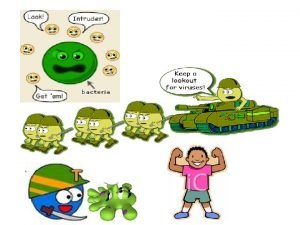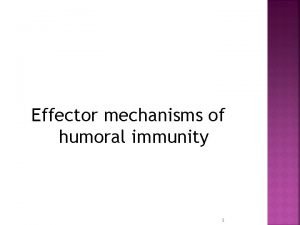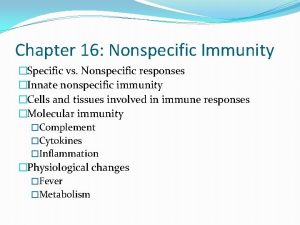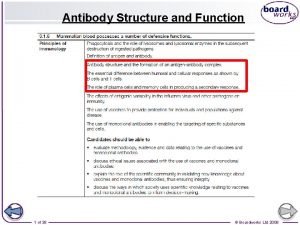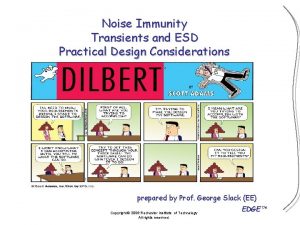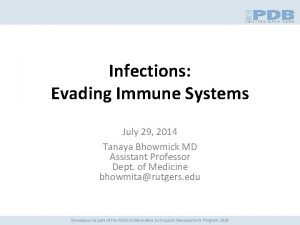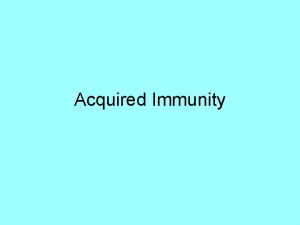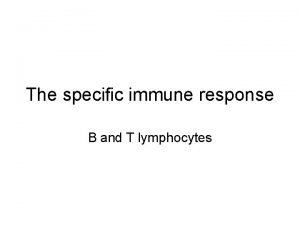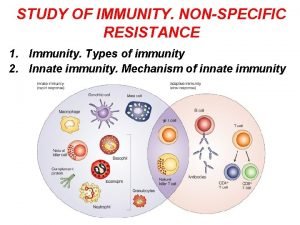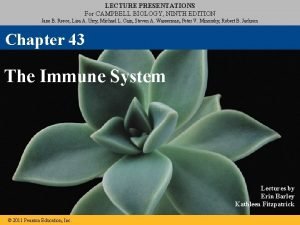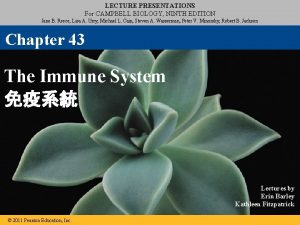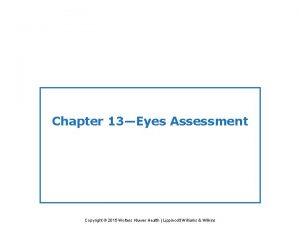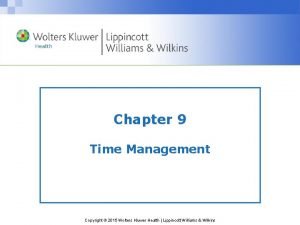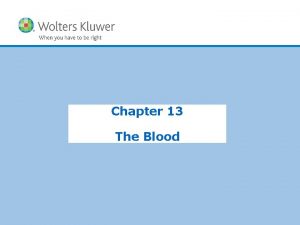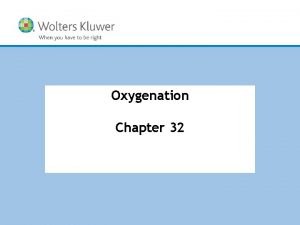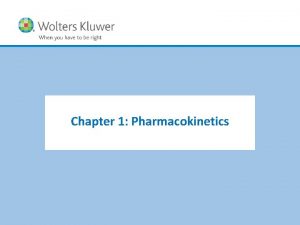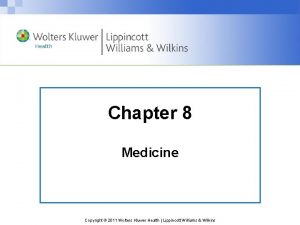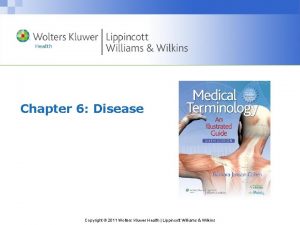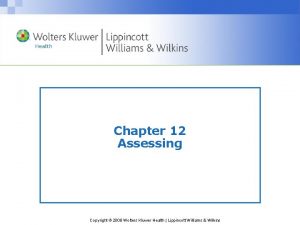Chapter 17 Immunity Copyright 2015 Wolters Kluwer Health























































- Slides: 55

Chapter 17 Immunity Copyright © 2015 Wolters Kluwer Health | Lippincott Williams & Wilkins

Key Terms allergy dendritic cells mast cell anaphylaxis gamma globulin natural killer (NK) cell antibody immunity phagocytosis antigen immunization plasma cell antiserum immunoglobulin T cell antitoxin immunotherapy toxin attenuated inflammation toxoid autoimmunity interferon transplantation B cell interleukin vaccine complement macrophage cytokine Copyright © 2015 Wolters Kluwer • All Rights Reserved

The Immune System · The immune system—all the cells and tissues that protect against foreign organisms or any cells different from our own normal cells. Copyright © 2015 Wolters Kluwer • All Rights Reserved

Why Do Infections Occur? Factors Involved in Infection • Portal of entry • Virulence of organism – Aggressiveness – Toxin production • Dose (number) of pathogens • Individual condition (predisposition) to infection Copyright © 2015 Wolters Kluwer • All Rights Reserved

Innate Immunity (cont. ) • First line of defense: barriers • Second line of defense: innate cells and chemicals Copyright © 2015 Wolters Kluwer • All Rights Reserved

Innate Immunity (cont. ) The First Line of Defense: Innate Barriers • Skin • Mucous membranes • Body secretions • Body reflexes – Sneezing – Coughing – Vomiting – Diarrhea Copyright © 2015 Wolters Kluwer • All Rights Reserved

Figure 17 -1 Lines of defense. Copyright © 2015 Wolters Kluwer • All Rights Reserved

Innate Immunity (cont. ) The Second Line of Defense: Innate Cells and Chemicals • Phagocytosis – Neutrophils – Macrophages • Natural killer cells • Cytokines and other chemicals – Interferon – Complement • Inflammation • Fever Copyright © 2015 Wolters Kluwer • All Rights Reserved

Innate Immunity (cont. ) Phagocytosis • White blood cells take in and destroy waste and foreign material. – Neutrophils – Macrophages Natural Killer Cell • Type of lymphocyte found in lymph nodes, spleen, bone marrow, blood • Recognizes body cells with abnormal membranes and secretes protein that breaks down the cell membrane Copyright © 2015 Wolters Kluwer • All Rights Reserved

Innate Immunity (cont. ) Cytokines and Other Chemicals • Interferons – Group of substances that prevent nearby cells from producing more virus • IFN α (alpha) • IFN β (beta) – Also acts nonspecifically on immune system cells Copyright © 2015 Wolters Kluwer • All Rights Reserved

Innate Immunity (cont. ) Cytokines and Other Chemicals (cont. ) • Complement – Specialized proteins in blood that are activated by immune responses – Functions: • Binds to foreign cells • Destroys cells • Promotes inflammation • Attracts phagocytes Copyright © 2015 Wolters Kluwer • All Rights Reserved

Figure 17 -2 Complement. Copyright © 2015 Wolters Kluwer • All Rights Reserved

Innate Immunity (cont. ) Inflammation • Infection is inflammation caused by pathogens. • Inflammatory reaction – Heat, redness, swelling, pain. – Cells release histamine. – Leukocytes enter tissue. • Granulocytes, macrophages, mast cells – Leukocytes and plasma produce inflammatory exudate. – Pus is produced. – Lymph nodes enlarge. Copyright © 2015 Wolters Kluwer • All Rights Reserved

Copyright © 2015 Wolters Kluwer • All Rights Reserved

Figure 17 -3 Inflammation. What causes the heat, redness, swelling, and pain characteristic of inflammation? Copyright © 2015 Wolters Kluwer • All Rights Reserved

Innate Immunity (cont. ) Fever • As phagocytes work, they release substances that raise body temperature. • Stimulates phagocytes. • Increases metabolism. • Decreases some organisms’ ability to multiply. Copyright © 2015 Wolters Kluwer • All Rights Reserved

Innate Immunity (cont. ) Pop Quiz 17. 1 ? Which of the following is NOT a classic symptom of inflammation? A) Redness B) Swelling C) Heat D) Cyanosis Copyright © 2015 Wolters Kluwer • All Rights Reserved

Innate Immunity (cont. ) Pop Quiz Answer 17. 1 ? Which of the following is NOT a classic symptom of inflammation? A) Redness B) Swelling C) Heat D) Cyanosis Copyright © 2015 Wolters Kluwer • All Rights Reserved

Adaptive Immunity (cont. ) • Power to overcome a specific disease agent • Characteristics – Specific response to specific pathogens – Acquired over lifetime – Stimulated by antigens Copyright © 2015 Wolters Kluwer • All Rights Reserved

Adaptive Immunity (cont. ) Antigens • Foreign substances that induce immune response of certain lymphocytes – T cells – B cells Copyright © 2015 Wolters Kluwer • All Rights Reserved

Adaptive Immunity (cont. ) T Cells • Originate in red bone marrow • Mature in thymus – Become sensitized to specific antigens • Provide cell-mediated immunity Copyright © 2015 Wolters Kluwer • All Rights Reserved

Adaptive Immunity (cont. ) T Cells (cont. ) • Types of T cells – Cytotoxic T cells – Helper T cells – Regulatory T cells – Memory T cells • Stimulated by antigen-presenting cells – Macrophages – Dendritic cells Copyright © 2015 Wolters Kluwer • All Rights Reserved

Figure 17 -4 Activation of a helper T cell by a dendritic cell (antigen-presenting cell, APC). What is contained in the lysosome that joins the phagocytic vesicle? Copyright © 2015 Wolters Kluwer • All Rights Reserved

Adaptive Immunity (cont. ) Pop Quiz 17. 2 ? Which of the following is NOT a type of T cell? A) Helper cell B) Plasma cell C) Cytotoxic cell D) Memory cell Copyright © 2015 Wolters Kluwer • All Rights Reserved

Adaptive Immunity (cont. ) Pop Quiz Answer 17. 2 ? Which of the following is NOT a type of T cell? A) Helper cell B) Plasma cell C) Cytotoxic cell D) Memory cell Copyright © 2015 Wolters Kluwer • All Rights Reserved

Adaptive Immunity (cont. ) B Cells • Originate and mature in red bone marrow • Produce antibodies • Provide humoral immunity • Cell types – Plasma cells • Secrete antibodies – Memory B cells Copyright © 2015 Wolters Kluwer • All Rights Reserved

Figure 17 -5 Activation of B cells. Copyright © 2015 Wolters Kluwer • All Rights Reserved

Adaptive Immunity (cont. ) B Cells and Antibodies • Bind antigen • Humoral immunity • Promote phagocytosis • Activate NK cells • Neutralize toxins • Activate complement Copyright © 2015 Wolters Kluwer • All Rights Reserved

Figure 17 -6 Production of antibodies (Ab). Copyright © 2015 Wolters Kluwer • All Rights Reserved

Copyright © 2015 Wolters Kluwer • All Rights Reserved

Adaptive Immunity (cont. ) Types of Adaptive Immunity • Naturally acquired immunity – Natural active immunity – Natural passive immunity • Artificially acquired immunity – Artificial active immunity – Artificial passive immunity Copyright © 2015 Wolters Kluwer • All Rights Reserved

Adaptive Immunity (cont. ) Naturally Acquired Immunity • Natural active immunity – Acquired through contact with a specific disease organism • Natural passive immunity – Acquired through transmission of maternal antibodies to fetus and baby Copyright © 2015 Wolters Kluwer • All Rights Reserved

Adaptive Immunity (cont. ) Artificially Acquired Immunity • Artificial active immunity – Acquired through contact with a vaccine • Artificial passive immunity – Acquired through delivery of manufactured antibodies to individual Copyright © 2015 Wolters Kluwer • All Rights Reserved

Figure 17 -7 Adaptive immunity. Copyright © 2015 Wolters Kluwer • All Rights Reserved

Adaptive Immunity (cont. ) Types of Vaccines • Live • Attenuated • Toxoid – Killed by heat or chemicals • Antigenic component or genetically engineered Copyright © 2015 Wolters Kluwer • All Rights Reserved

Adaptive Immunity (cont. ) Boosters • Active immunity does not always last a lifetime. • Repeated inoculations (booster shots) help maintain high titer of antibodies in the blood. • Number and timing vary with vaccines. Copyright © 2015 Wolters Kluwer • All Rights Reserved

Copyright © 2015 Wolters Kluwer • All Rights Reserved

Adaptive Immunity (cont. ) Bacterial Vaccines • Children immunized against bacteria – Example: • Diphtheria, tetanus, and pertussis (whooping cough)(DTa. P) • Haemophilus influenzae type B (Hib) • Pneumococcal (PCV) Copyright © 2015 Wolters Kluwer • All Rights Reserved

Adaptive Immunity (cont. ) Viral Vaccines Increasing number of viral vaccines being developed • MMR (measles, (rubeola), mumps, rubella (German measles) • Hepatitis B (hep. B; recommended for health care workers) • Hepatitis A (recommended for travelers) • Varicella (chickenpox) • Influenza • Rotavirus • HPV (human papillomavirus) • Rabies Copyright © 2015 Wolters Kluwer • All Rights Reserved

Figure 17 -8 The intranasal vaccine. Copyright © 2015 Wolters Kluwer • All Rights Reserved

Adaptive Immunity (cont. ) Antiserum • “Readymade” serum provides short-lived effective protection. • Preparation of sera • Some examples: – Diphtheria – Tetanus immune globulin – Hepatitis B immune globulin – Immune globulin Rh (trade name Rho. GAM) – Antivenins (anti-snake bite) – Botulism antitoxin – Rabies Copyright © 2015 Wolters Kluwer • All Rights Reserved

Adaptive Immunity (cont. ) Pop Quiz 17. 3 ? Which form of immunity results from a vaccination? A) Natural active immunity B) Natural passive immunity C) Artificial active immunity D) Artificial passive immunity Copyright © 2015 Wolters Kluwer • All Rights Reserved

Adaptive Immunity (cont. ) Pop Quiz Answer 17. 3 ? Which form of immunity results from a vaccination? A) Natural active immunity B) Natural passive immunity C) Artificial active immunity D) Artificial passive immunity Copyright © 2015 Wolters Kluwer • All Rights Reserved

Immune Disorders (cont. ) Immune disorders • Allergy – Anaphylaxis • Autoimmunity • Immune deficiency diseases – Congenital – Acquired (e. g. , AIDS) • Multiple myeloma Copyright © 2015 Wolters Kluwer • All Rights Reserved

Copyright © 2015 Wolters Kluwer • All Rights Reserved

Immune Disorders (cont. ) Allergy • Unfavorable immune response to a commonly encountered substance that is otherwise harmless, that is, pollen, shrimp • Allergens • Antibodies • Anaphylaxis – Life-threatening allergic response • Treatments – Antihistamines – Repeated intermittent injections of offending allergen may desensitize an allergic person. Copyright © 2015 Wolters Kluwer • All Rights Reserved

Immune Disorders (cont. ) Autoimmunity • Abnormal reactivity to one’s own tissues • Factors that may result in autoimmunity – Change in “self-proteins, ” disease – Loss of immune system control – Cross-reaction of antibodies and self-antigens – Examples: rheumatoid arthritis, multiple sclerosis, psoriasis, lupus erythematosus, Graves disease • Treatments – Immune-suppressing drugs – Chemotherapy used to destroy immune cells Copyright © 2015 Wolters Kluwer • All Rights Reserved

Figure 17 -9 Allergy. Copyright © 2015 Wolters Kluwer • All Rights Reserved

Immune Disorders (cont. ) Immune Deficiency Diseases • Failure of the immune system • May involve any part of system • Varies in severity • Congenital or acquired (e. g. , AIDS) Copyright © 2015 Wolters Kluwer • All Rights Reserved

Immune Disorders (cont. ) Multiple Myeloma • Bone marrow tumor • Effects of disease – Lowered resistance to infection – Anemia – Bone pain – Bone tissue loss – Kidney failure • Treatment – Chemotherapy – Bone marrow transplants Copyright © 2015 Wolters Kluwer • All Rights Reserved

The Immune System and Cancer (cont. ) • Immune surveillance – Declines with age • Immunotherapy – T cells activated with interleukin – Vaccines Copyright © 2015 Wolters Kluwer • All Rights Reserved

Transplantation and Rejection Syndrome (cont. ) • Rejection syndrome caused by normal antigen–antibody reaction • Reduced by: – Tissue typing – Immune suppression drugs Copyright © 2015 Wolters Kluwer • All Rights Reserved

Figure 17 -10 Immune surveillance. Copyright © 2015 Wolters Kluwer • All Rights Reserved

Case Study (cont. ) Rheumatoid Arthritis • Rheumatoid arthritis is a systemic inflammatory disease. • Results from antibodies being produced against a person’s own tissues. • Abnormal laboratory tests: elevated immunoglobulins, slightly elevated complement (nonspecific proteins) levels. • Symptoms: decreased range of motion of joints, warmth of skin over joint areas, stiffness of joints in the morning; painful joints. • Treatment: drug therapy to treat symptoms, reduce pain and inflammation and slow joint degeneration, maximize optimal mobility, education on treatment plan. Copyright © 2015 Wolters Kluwer • All Rights Reserved

Word Anatomy (cont. ) Word Part Meaning Example Why Do Infections Occur? tox poison A toxin is a substance that is poisonous. Immune Disorders ana- back, again Anaphylaxis is a life-threatening condition that results from an exaggerated immune reaction. erg work In cases of allergy, the immune system overworks. myel/o marrow Multiple myeloma is a cancer (-oma) of blood-forming cells in bone marrow. Copyright © 2015 Wolters Kluwer • All Rights Reserved
 Wolters kluwer health
Wolters kluwer health Lippincott
Lippincott Wolters kluwer health
Wolters kluwer health Wolters kluwer
Wolters kluwer Wolters kluwer health
Wolters kluwer health Wolters kluwer health
Wolters kluwer health Wolters kluwer health
Wolters kluwer health Wolters kluwer health
Wolters kluwer health Wolters kluwer health lippincott williams & wilkins
Wolters kluwer health lippincott williams & wilkins Wolters kluwer
Wolters kluwer Wolters kluwer
Wolters kluwer Lippincott williams & wilkins
Lippincott williams & wilkins Wolters kluwer
Wolters kluwer Wolters kluwer
Wolters kluwer Wolters kluwer
Wolters kluwer Virchow's triad
Virchow's triad Wolters kluwer pronunciation
Wolters kluwer pronunciation Wolters kluwer
Wolters kluwer Copyright
Copyright Wolters kluwer
Wolters kluwer Wolters kluwer
Wolters kluwer Physical examination techniques
Physical examination techniques Wolters kluwer ovid
Wolters kluwer ovid Wolters kluwer culture
Wolters kluwer culture Wolters kluwer pronunciation
Wolters kluwer pronunciation Difference between acquired immunity and innate immunity
Difference between acquired immunity and innate immunity Copyright 2015 all rights reserved
Copyright 2015 all rights reserved Copyright 2015 all rights reserved
Copyright 2015 all rights reserved Chapter 13 lymphatic system and immunity
Chapter 13 lymphatic system and immunity Chapter 16 lymphatic system and immunity
Chapter 16 lymphatic system and immunity Lymphatic system composed of
Lymphatic system composed of Kluwer
Kluwer Hotel merken
Hotel merken Public health curriculum 2015
Public health curriculum 2015 Iuss standards
Iuss standards Active artificial immunity
Active artificial immunity Difference between active and passive immunity
Difference between active and passive immunity Effector mechanism of humoral immunity
Effector mechanism of humoral immunity Nonspecific vs specific immunity
Nonspecific vs specific immunity Canra passed
Canra passed Humoral and cell mediated immunity difference
Humoral and cell mediated immunity difference Adaptive noise immunity
Adaptive noise immunity Keva immunity booster
Keva immunity booster Assis prof
Assis prof Innate immunity examples
Innate immunity examples Iec 62132-4
Iec 62132-4 Wepapers
Wepapers Acquired immunity definition
Acquired immunity definition Odibate
Odibate Active vs passive immunity
Active vs passive immunity Non specific immunity
Non specific immunity Neutrophil extracellular traps
Neutrophil extracellular traps Cell mediated immunity
Cell mediated immunity Cell mediated immunity
Cell mediated immunity Innate immunity first line of defense
Innate immunity first line of defense Innate immunity
Innate immunity



